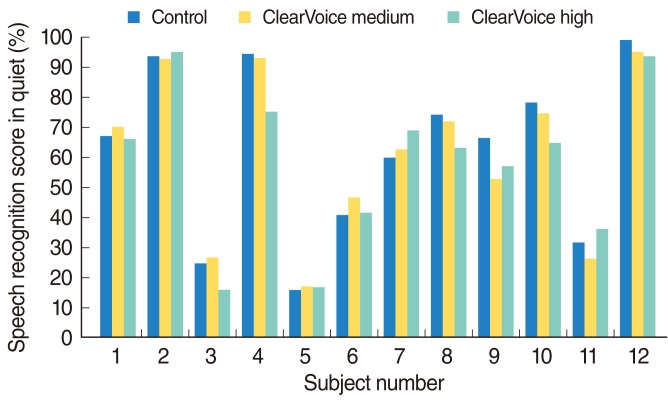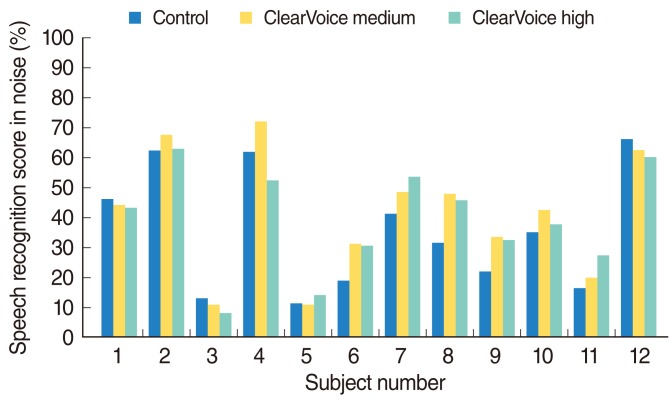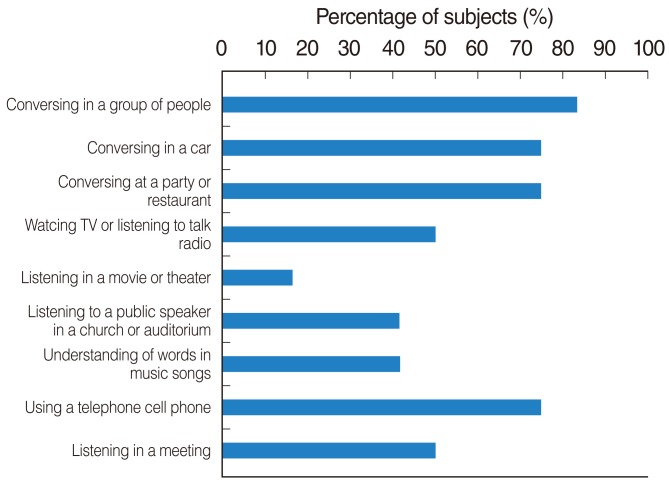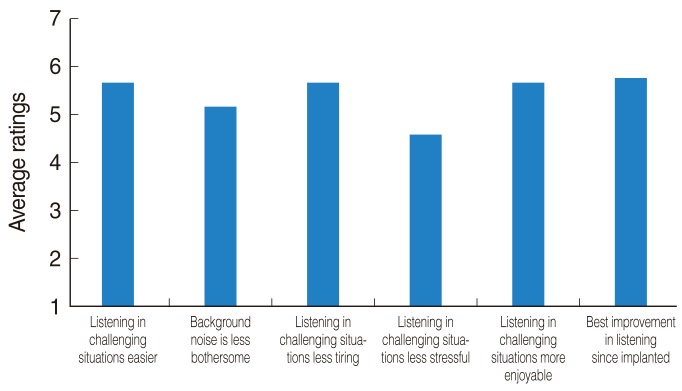Clin Exp Otorhinolaryngol.
2012 Apr;5(Suppl 1):S89-S92.
Evaluation of the ClearVoice Strategy in Adults Using HiResolution Fidelity 120 Sound Processing
- Affiliations
-
- 1Department of Otorhinolaryngology, Head and Neck Surgery, Institute of Human Communicative Research, The Chinese University of Hong Kong, Hong Kong. annakam@ent.cuhk.edu.hk
- 2Advanced Bionics Corporation, Hong Kong.
Abstract
OBJECTIVES
This study aimed to evaluate the benefits of ClearVoice strategy on speech perception in noise and in everyday listening situations in Cantonese-speaking cochlear implant users.
METHODS
Twelve experienced adult users of the Harmony implant and HiRes 120 sound processing participated in the study. The study employed a prospective within-subjects design wherein speech recognition in adults using HiRes 120 without ClearVoice turned on (control option) was compared to their performance with HiRes 120 with ClearVoice turned on. Each subject was evaluated with two different ClearVoice gain settings: -12 dB (ClearVoice medium) and -18 dB (ClearVoice high) after one-week of use. The Cantonese hearing in noise test and a questionnaire were used as the outcome measures.
RESULTS
Subjects performed significantly better with ClearVoice medium than with control option in noise. No significant difference in performance was noted among the 3 settings in quiet. Most subjects reported high level of satisfaction with ClearVoice in daily listening situations and preferred to keep ClearVoice on.
CONCLUSION
ClearVoice can help cochlear implant recipients to hear better in noise.
MeSH Terms
Figure
Reference
-
1. Nelson PB, Jin SH, Carney AE, Nelson DA. Understanding speech in modulated interference: cochlear implant users and normal-hearing listeners. J Acoust Soc Am. 2003; 2. 113(2):961–968. PMID: 12597189.
Article2. Spriet A, Van Deun L, Eftaxiadis K, Laneau J, Moonen M, van Dijk B, et al. Speech understanding in background noise with the two-microphone adaptive beamformer BEAM in the Nucleus Freedom Cochlear Implant System. Ear Hear. 2007; 2. 28(1):62–72. PMID: 17204899.
Article3. Wouters J, Vanden Berghe J. Speech recognition in noise for cochlear implantees with a two-microphone monaural adaptive noise reduction system. Ear Hear. 2001; 10. 22(5):420–430. PMID: 11605949.
Article4. Gifford RH, Revit LJ. Speech perception for adult cochlear implant recipients in a realistic background noise: effectiveness of preprocessing strategies and external options for improving speech recognition in noise. J Am Acad Audiol. 2010; Jul-Aug. 21(7):441–451. PMID: 20807480.
Article5. Schafer EC, Thibodeau LM. Speech recognition in noise in children with cochlear implants while listening in bilateral, bimodal, and FM-system arrangements. Am J Audiol. 2006; 12. 15(2):114–126. PMID: 17182876.
Article6. Schafer EC, Thibodeau LM. Speech recognition abilities of adults using cochlear implants with FM systems. J Am Acad Audiol. 2004; Nov-Dec. 15(10):678–691. PMID: 15646666.
Article
- Full Text Links
- Actions
-
Cited
- CITED
-
- Close
- Share
- Similar articles
-
- Noise Reduction Using Wavelet Thresholding of Multitaper Estimators and Geometric Approach to Spectral Subtraction for Speech Coding Strategy
- Temporal Processing in the Auditory System
- On the marginal fidelity of all-ceramic core using CAD/CAM system
- What Is Temporal Fine Structure and Why Is It Important?
- Medical Education Using the High-Fidelity Medical Simulator







